What? |
|---|
|
Lake Tazawa (田沢湖) is a caldera lake and the deepest one Japan has to offer at 423 meters. There is a shrine and one can take a pleasure boat, but most famous is the golden statue of a girl named Tatsuko which figures on most promotional pictures. The Arakawa Copper Mine (荒川鉱山) in central Akita was in use from 1738 until 1940 when its company Mitsubishi closed the place, meaning the end for both the mine as the town that was built around it. From 1993 to 2007 the place was turned into a touristic spot under the name Mineroad Arakawa (ナインロード荒川) where people could enter one of the tunnels. The collapse of the tunnel meant the definite end of the mine in whatever form. Now there are only ruins left to see. |
Where? |
|
Lake Tazawa in Akita Prefecture (秋田県) is located at the foot of Mount Akita-Komagatake (秋田駒ケ岳) and can also be seen from its summit. It can be reached by bus from Tazawako Station (田沢湖駅) (Tazawa-kohan bus stop田沢湖畔バス停 ). There are also a few buses a day that follow the shoreline to the other side of the lake. The ruins of the Arakawa Copper Mine can only be visited by car. 
|
URL |
|
Japan Guide Outline Japan Location Data Base |
I would just be driving back to Akita with a few stops along the way, nothing spectacular.
In the morning however it was raining pretty hard. As I had stayed on top of Hachimantai Mountain, and as I’m not an overconfident driver, I was a bit uneasy about the way down by car. So I decided to leave really early so I wouldn't bother any cars behind me because of my slow pace. Along the way a tree had cut off the road though, so I needed to wait for the firemen and a bunch of chainsaw-wielding workers to clear the way. As a result there was a huge line of cars behind me – there went my genius plan.
I didn't let it stress me though; I drove my own pace and let all the others pass once I had the space to put myself aside. But the waking up early and the tree-story had made me very tired though. So I gave up on driving on making the small detour to the Oga Peninsula and just return the car to rental office.
Along the way I would pass still stop for two spots.
Lake Tazawa is a source of pride for the Akita people. And I can understand it in a way. It’s pretty, it’s still rural and not overly developed. Without the clouds I believe the backdrop of the mountains would have been fantastic.
That being said, the statue of Tatsuko is a complete mystery to me. It’s not a beautiful statue, it’s rather misplaced, and so is the text
“Tatsuko, the beautiful girl in the Tazawako legend, with a hint of shyness, waits for something after bathing, expressing how such a girl feels.”
I don’t know the legend, and I can tell you that I don’t need to know it. I think I will never understand these random “classical” statues.
After a short rest I drove on the next stop: the Arakawa Copper Mine. There’s not much to find about the mine on the internet, I just spotted it on google maps as being along my way. I was very happy to make the detour though. It’s easy to reach if you have a car. The place is pretty much isolated from anything else (except a racing circuit which is locater there, exactly because it is isolated) and the few other roads have not been maintained for a long time. But up until the ruins the road is straight, wide and looked after.
The ruins itself would be completely off-limit in many other places in Japan, but here you can just wander through them at your own will. Signs are still legible which makes it even a bit educational. The tunnel road which once was a touristic attraction is sealed off, but I discovered that some of the planks are loose, so you can definitely enter if you want to. I didn’t have the guts – and besides, outside it was 30 degrees, but inside the first bit of tunnel it was freezing cold.
Walking around here in absolute silence (that is, after the race cars stopped) made it really possible to contemplate how fleeting life is. Not even 100 years ago, this was a place with much industrial activity and with houses and schools and everything. Around 4000 people lived here on these slopes – 8000 if you include the surrounding towns. There wouldn’t have been many room for trees or green in general, but now nature is taking over again.
>>More pictures<< |

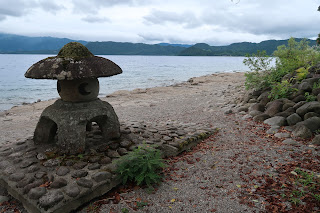

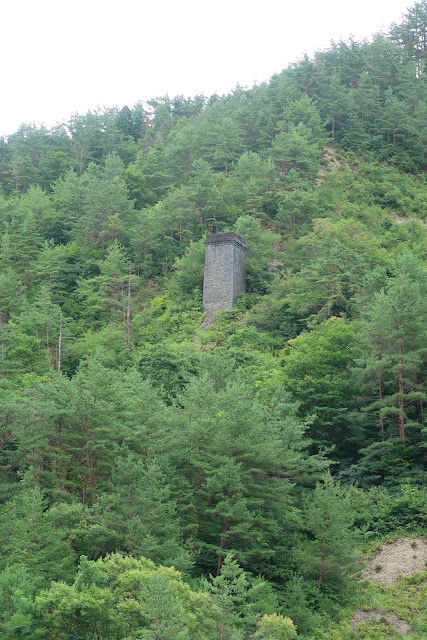
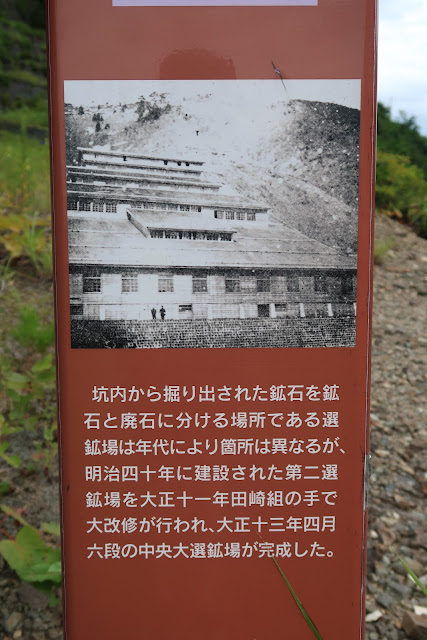
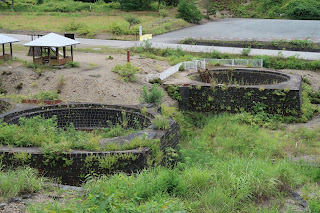
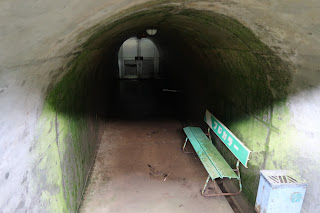

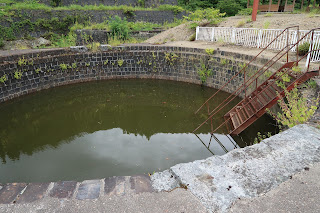











No comments:
Post a Comment